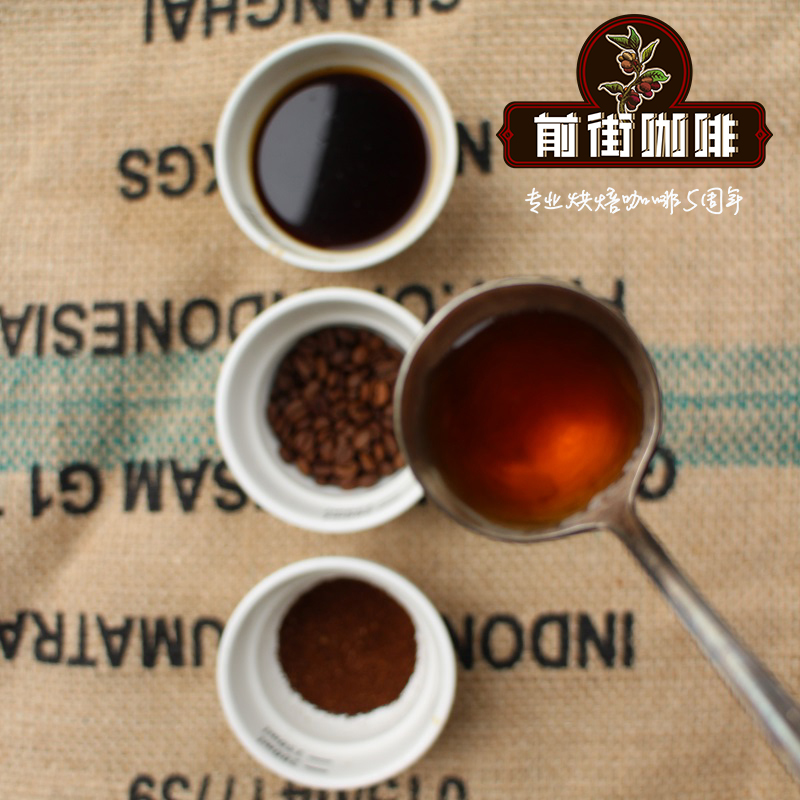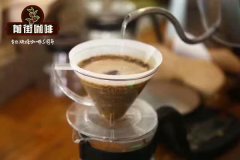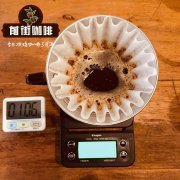Peruvian organic coffee beans | Camarca San Ignacio small farmers wash Kaddura and card in micro batches

Professional coffee knowledge exchange more coffee bean information please follow the coffee workshop (Wechat official account cafe_style)
Peruvian Organic Coffee beans | what is the flavor of Camaca San Ignacio small farmers washing Kaddura and Kaduai beans in micro batches?
Peru (Peru) is also a big coffee producer. Up to 98% of Peruvian coffee is grown in forest areas, and most producers are small farmers. Peru has good economic conditions and a stable political situation, thus ensuring the good quality of coffee. However, there are many local problems, in addition to guerrilla warfare and drug trafficking, the emergence of cholera along the coast in the mid-1990s led to a further economic depression, and what is more, the annual inflation rate reached 7000%.
In the mid-1970s, Peruvian coffee production was about 900000 bags a year, and then steadily increased to about 1.3 million bags a year. Although private exporters buy coffee in remote areas through middlemen, the main market is still monopolized by the government. Later, the private Peruvian Coffee exporters Association (Comera de Exportadoresde Cafe del Peru), which is committed to improving the quality of coffee, its primary task is to set standards and eliminate inferior products, so as to create an atmosphere of quality supremacy. This positive move heralds a bright future for the coffee industry. Since then, rising prices have encouraged farmers to actively grow coffee instead of ── cocoa, the region's traditional cash crop.
Peru's finest coffee is produced in Chanchmayo, Cuzco, Norte and Puno. Most Peruvian coffee is grown under natural conditions, but it is also difficult to confirm the cultivation of all coffee trees. Coffee grown under natural conditions costs 10% more than others. Judging from poverty, farmers may not have the money to buy chemical fertilizers and pesticides, but it is really difficult to confirm all the coffee. Peru (Peru) is also a big coffee producer. Up to 98% of Peruvian coffee is grown in forest areas, and most producers are small farmers.
Peru has good economic conditions and a stable political situation, thus ensuring the good quality of coffee. However, there are many local problems, in addition to guerrilla warfare and drug trafficking, the emergence of cholera along the coast in the mid-1990s led to a further economic depression, and what is more, the annual inflation rate reached 7000%. The quality of Peruvian coffee is comparable to that of any kind of coffee in Central or South America. The high quality coffee produced by Peru is shipped to Germany for blending and then to Japan and the United States, which also illustrates its high standard of quality.
The organic washed Peruvian coffee comes from Chanchamayo (also known as La Merced) in the Junin producing area, which is located 350km north of Lima. Although this area is covered with mountains and jungles, although it is located in the tropical rain forest, it grows high enough to maintain a suitable annual temperature and rainfall. It is the most famous and best-quality coffee producing region in Peru. Most small coffee farmers in Peru own only about two hectares of farmland each; almost all of them are organic because they are poor and cannot afford to buy chemical fertilizers or pesticides
And process and sell their output through the type of cooperative. Generally speaking, Peruvian coffee is characterized by a full and balanced taste!
San Ignacio San Ignacio, Peru. According to Gardelli, this is the best Peruvian he has ever tasted.
Rony Gurrero founded Lima Coffee in Jaen in 2016. Ronnie worked as a quality controller at Peru's largest coffee exporter to understand the quality and potential of coffee products, but what he saw was a small number of coffee with outstanding flavor, mixed with a large number of commercial beans and drowned in obscurity. The goal of Lima Coffee is to subvert the previous model of cooperation, based entirely on cup scores, made up of farmers in the same area as opposed to traditional cooperatives, hoping to sell as much coffee as possible. But Ronnie's new model is different, based entirely on quality, and because he is so familiar with farmers and products in Cajamarca, he can find the best coffee and sell it to the United States in micro batches, so that he is finally able to preserve the boutique grade coffee without being devalued as commercial beans.
Farmers in Kamamaca near the town of San Ignacio, San Ignacio, are small, but the farms are full of micro-processing plants, with simple peeling machines, cement fermentation tanks and tanning grounds. After the ripe fresh fruit was harvested, it was treated with traditional water washing, then dry fermented for 12-18 hours, washed and removed mucus, and moved to an elevated shed bed to dry for 10-14 days. When the moisture content is less than 12%, farmers will send shell beans to a processing plant in San Jagnasio for shelling. Ronnie is so strict about the quality that he won't buy any raw beans with more than 11% moisture to avoid rapid aging.
There are three varieties of this coffee: red, yellow Kaddura, and Tibica, produced by five farmers: Luiz Antonio, Jacinto Jora Willaacero, Alexander Flores, Rosendo Cofiria and Gevaro Cruz.
Producing area: San Ignacio San Ignacio; Cayamaca Cajamarca
Producer: 5 small coffee farmers
Altitude: 1500-2000 m
Beans: Tibica Typica, Red Kaddura Red Caturra, Huang Kadura Yellow Caturra
Treatment: washing Washed
Flavor: berries, nuts, caramel sweetness, smooth cream, mild freshness, balanced taste
Filter cup: Hario V60
Water temperature: 90 degrees
Degree of grinding: small Fuji 3.5
Cooking methods: the ratio of water to powder is 1:15, 15g powder, the first injection of 25g water, 25 s steaming, the second injection to 120g water cut off, waiting for the powder bed water to half and then water injection, slow water injection until 225g water, extraction time about 2:00
Analysis: using three-stage brewing to clarify the flavor of the front, middle and back of the coffee. Because the V60 has many ribs and the drainage speed is fast, it can prolong the extraction time when the water is cut off.
Important Notice :
前街咖啡 FrontStreet Coffee has moved to new addredd:
FrontStreet Coffee Address: 315,Donghua East Road,GuangZhou
Tel:020 38364473
- Prev

Grade of Ethiopian coffee | ECX rating and scoring criteria? Special selection of ECX in Yega Xuefei producing area
Professional coffee knowledge exchange more coffee bean information please follow the coffee workshop (Wechat official account cafe_style) the grade of Ethiopian coffee | ECX grading and scoring criteria? Yega Xuefei production area ECX specially selected washing G1 flavor? Ethiopian washed coffee Yega Chuefei G1 G2, the highest levels of Cedamo (Yirgacheffe, Sidamo) are level 2 and 3 (G2, G3)
- Next

Introduction to the characteristics of coffee beans in AA-Songea producing area of Tanzania _ how to bake coffee beans in Tanzania
Professional coffee knowledge exchange more coffee bean information please follow the coffee workshop (Wechat official account cafe_style) Tanzania is located in eastern Africa, south of the equator, Mount Kilimanjaro, Africa's highest peak, is located in this country. Most of the country's high-quality coffee comes from around Mount Kilimanjaro in the north and has a flavor similar to Kenyan coffee. However, the coffee beans recommended by the author
Related
- Detailed explanation of Jadeite planting Land in Panamanian Jadeite Manor introduction to the grading system of Jadeite competitive bidding, Red bid, Green bid and Rose Summer
- Story of Coffee planting in Brenka region of Costa Rica Stonehenge Manor anaerobic heavy honey treatment of flavor mouth
- What's on the barrel of Blue Mountain Coffee beans?
- Can American coffee also pull flowers? How to use hot American style to pull out a good-looking pattern?
- Can you make a cold extract with coffee beans? What is the right proportion for cold-extracted coffee formula?
- Indonesian PWN Gold Mandrine Coffee Origin Features Flavor How to Chong? Mandolin coffee is American.
- A brief introduction to the flavor characteristics of Brazilian yellow bourbon coffee beans
- What is the effect of different water quality on the flavor of cold-extracted coffee? What kind of water is best for brewing coffee?
- Why do you think of Rose Summer whenever you mention Panamanian coffee?
- Introduction to the characteristics of authentic blue mountain coffee bean producing areas? What is the CIB Coffee Authority in Jamaica?

